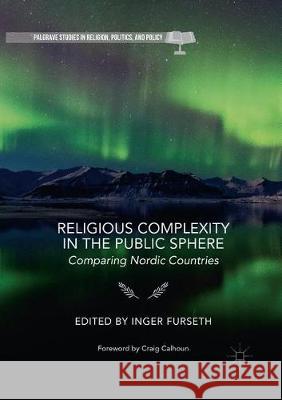Religious Complexity in the Public Sphere: Comparing Nordic Countries » książka
topmenu
Religious Complexity in the Public Sphere: Comparing Nordic Countries
ISBN-13: 9783319857244 / Angielski / Miękka / 2018 / 341 str.
Kategorie BISAC:
Wydawca:
Palgrave MacMillan
Seria wydawnicza:
Język:
Angielski
ISBN-13:
9783319857244
Rok wydania:
2018
Wydanie:
Softcover Repri
Ilość stron:
341
Oprawa:
Miękka
Wolumenów:
01











